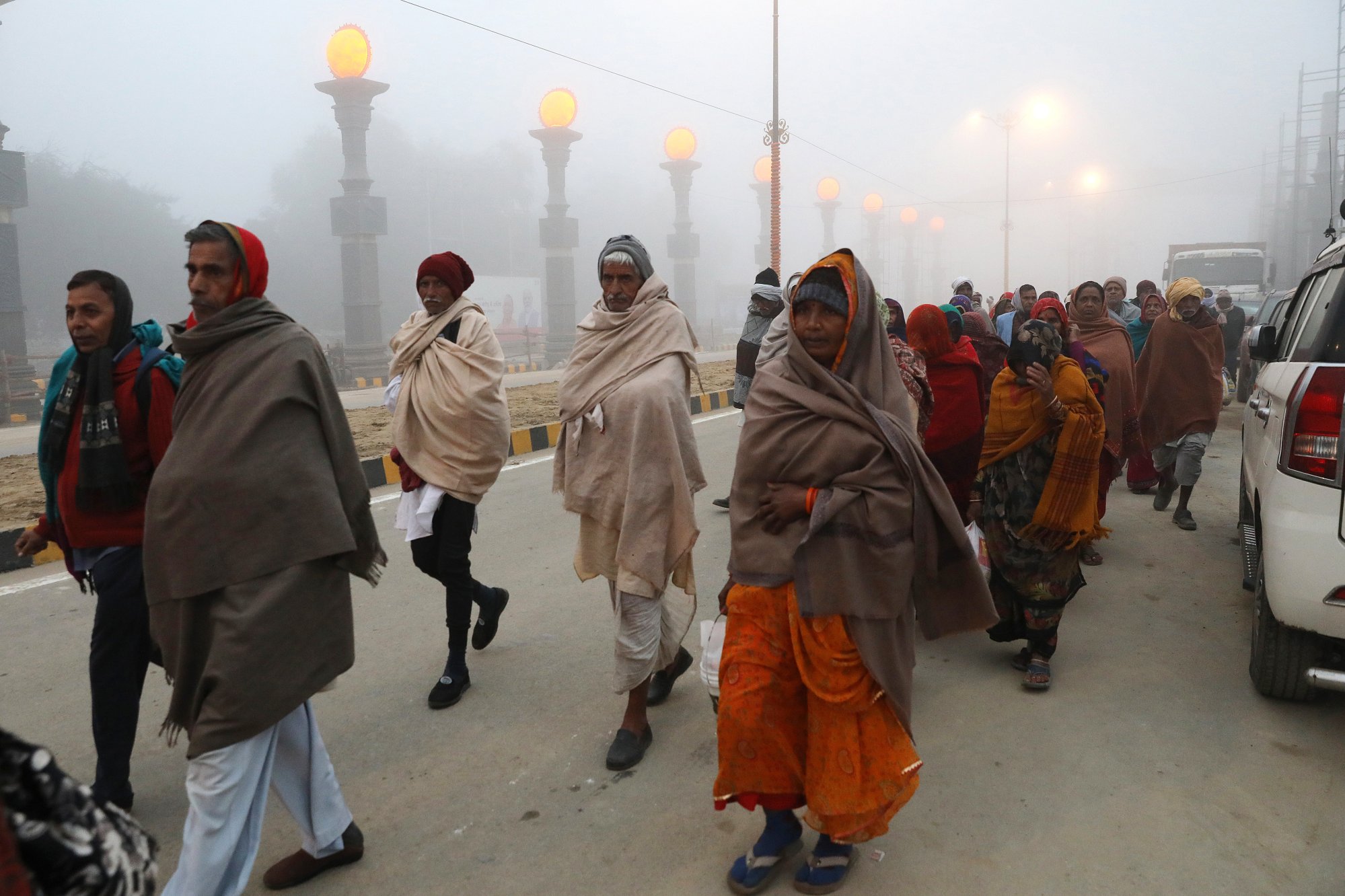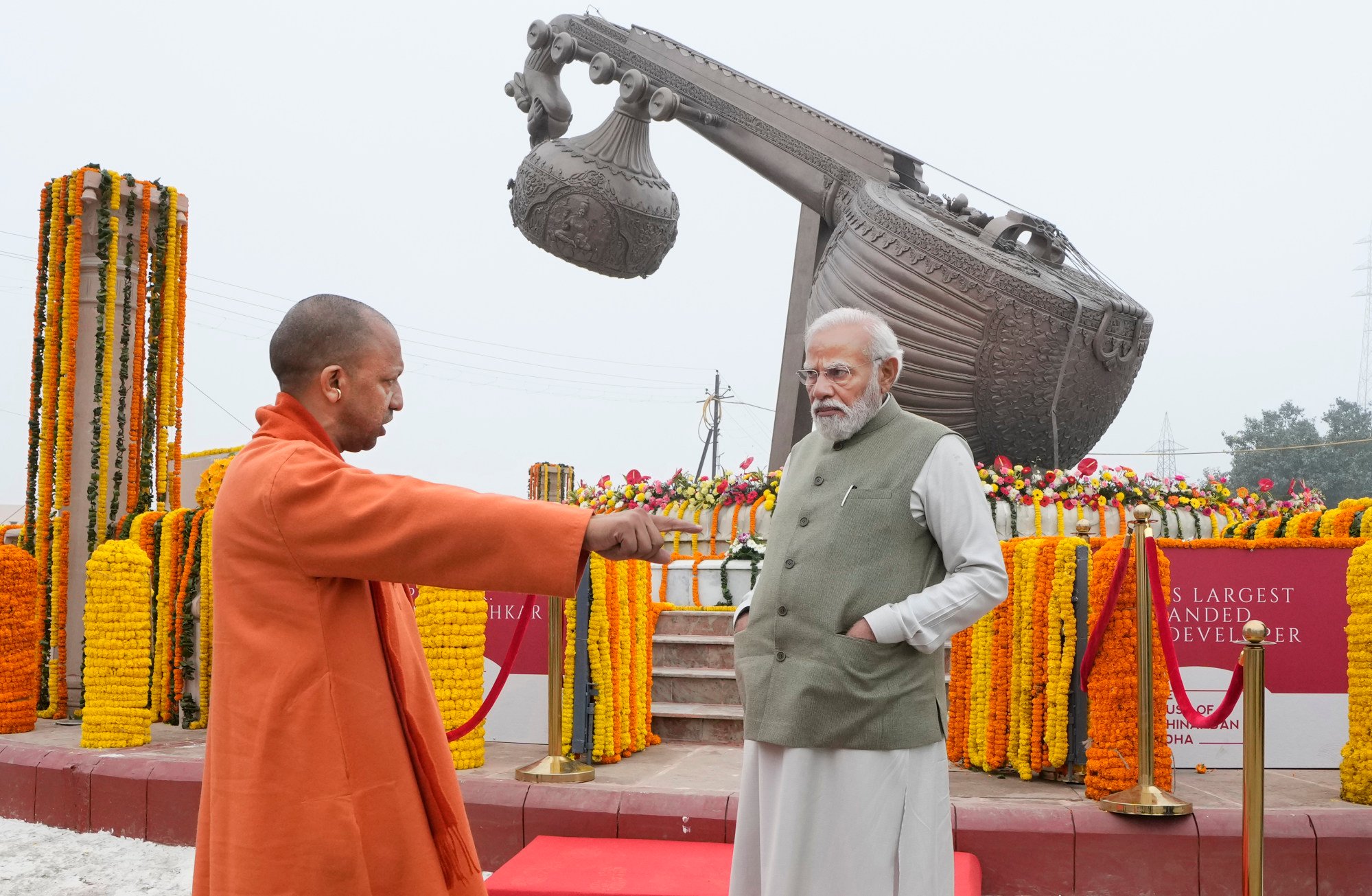India’s BJP set to ‘whip up’ Hindu nationalist sentiment with Ayodhya temple campaign
[ad_1]
“There was a time when, in this very Ayodhya, Lord Ram was kept inside a tent. Today, a permanent house has been built for not only Lord Ram but also for 40 million [shelterless] Indians,” Modi told a packed gathering at the weekend, many people waving flags emblazoned with Ram’s image.
The prime minister’s reference to permanent homes relates to concrete ones built for the poor, highlighting his government’s development work.
In Ayodhya, a religious dispute that sways elections 130 years on
In Ayodhya, a religious dispute that sways elections 130 years on
Modi urged Indians to light up their houses during the temple’s inauguration, in the same way Hindus celebrate Diwali, the annual festival of lights, which markd Ram’s return from exile to his Ayodhya home after defeating his evil adversary Ravan.
The prime minister will soon lead a consecration ceremony for a Ram sculpture at the temple, with opposition leaders invited.
Some observers believe the ceremony will strengthen Hindu nationalism. The BJP “will use the occasion to whip up religious and cultural sentiment”, said Nilanjan Mukhopadhyay, a journalist and commentator focusing on Hindu nationalism.
The opposition has never been able to have a consistent response to the Hindu nationalist programme of the BJP
Thanks to a series of BJP initiatives and online posts, Mukhopadhyay said, the religious narrative is likely to swirl until the Ram Navami festival in April, which marks Ram’s birth.
That is also likely to serve as a starting point for widening a campaign to establish temples at other disputed sites, he added.
Last month the Allahabad High Court in Uttar Pradesh gave the go ahead for a survey of a mosque near a temple called Krishna Janmabhoomi – said to be the birthplace of the god Krishna – in the city of Mathura after petitioners claimed the Muslim place of worship showed signs of Hindu religion.

Mukhopadhyay said it was “a matter of time” before mosque sites in Varanasi and Mathura – key Hindu pilgrimage cities – give way to temples. The BJP “will time it to suit them most politically”, he said.
West Bengal state chief minister Mamata Banerjee, leader of regional party the Trinamool Congress, indicated she will skip this month’s Ram ceremony, while Samajwadi party leader Akhilesh Yadav, influential in Uttar Pradesh, responded vaguely, saying he will visit the temple “whenever god wants him to”.
Calls grow for Nepal to ditch secularism as India’s BJP pushes Hindu agenda
Calls grow for Nepal to ditch secularism as India’s BJP pushes Hindu agenda
The march is expected to go through several states, including Uttar Pradesh.
Little resistance
“The opposition has never been able to have a consistent response to the Hindu nationalist programme of the BJP,” said Mukhopadhyay, adding that “the moment you take a soft line … you are taking the position of a B-team”, which “can never win”.
The Indian National Developmental Inclusive Alliance – commonly known as INDIA – is an opposition coalition that was strung together last year in an attempt to halt the BJP juggernaut. However, it has not arrived at a seat-sharing arrangement to field a common candidate against the BJP that avoids undercutting each constituent party’s votes.
Nor has the group been able to decide on who would be able take on the hugely popular Modi, amid infighting and a lack of ideas, Mukhopadhyay said.

Meanwhile, enthusiasm for the temple and its associated projects seems strong in Ayodhya.
“The roads were so bad that it would take us six hours to reach Lucknow [the state capital], but now we are able to do the same distance in a couple of hours because of a new road,” said Prabhakar Pandey, a 64-year-old lawyer in Ayodhya.
The city’s youth hope an influx of visitors will bring employment.
“I am a college graduate and have completed a postgraduate vocational programme, but jobs are few and far between. But now I think there will be new jobs,” said 23-year-old Dharmendra Kumar, who wants to be a train driver.
More big fat Indian weddings are heading abroad – and Modi’s not happy about it
More big fat Indian weddings are heading abroad – and Modi’s not happy about it
Modi has also called for a cleanliness drive at pilgrimage centres across India from mid-January to coincide with the spiritual festival Makar Sankranti.
Praveen Rai, a political analyst at the Centre for the Study of Developing Societies in New Delhi, said most ancient temples in India “have been in bad shape. The BJP has played on this smartly by appealing to people’s pride”.
The temple movement will push local development and highlight Hinduism ahead of elections, he said.
Rai added that religious fervour was unlikely to overshadow the BJP’s governance ahead of this year’s elections, as voters are often swayed by good leadership.
[ad_2]
Source link

